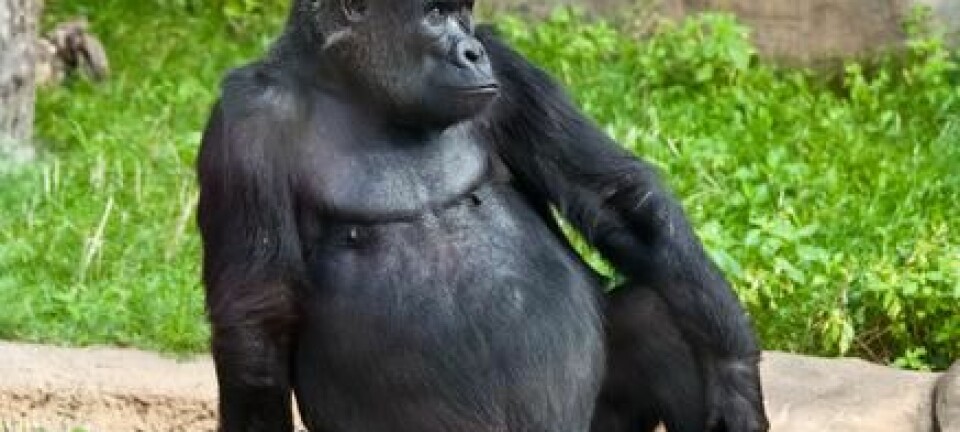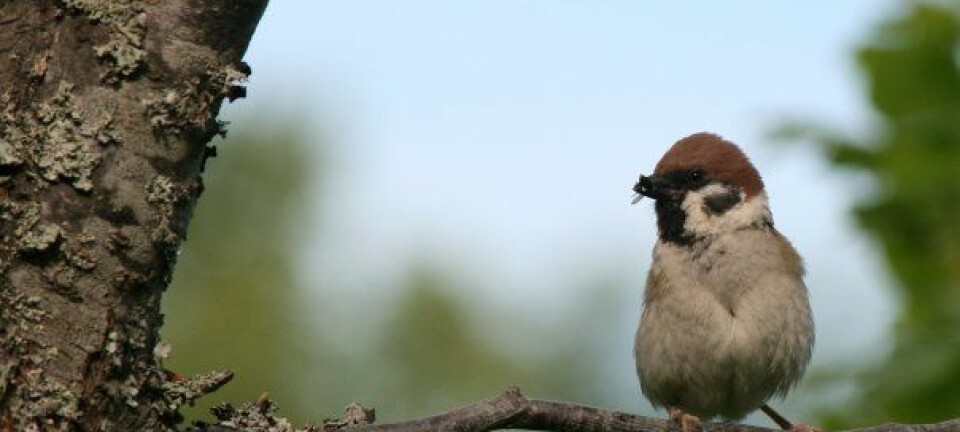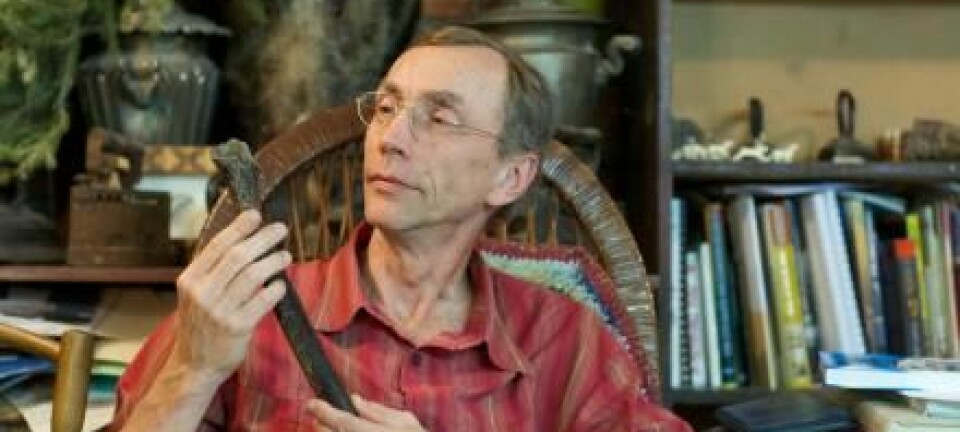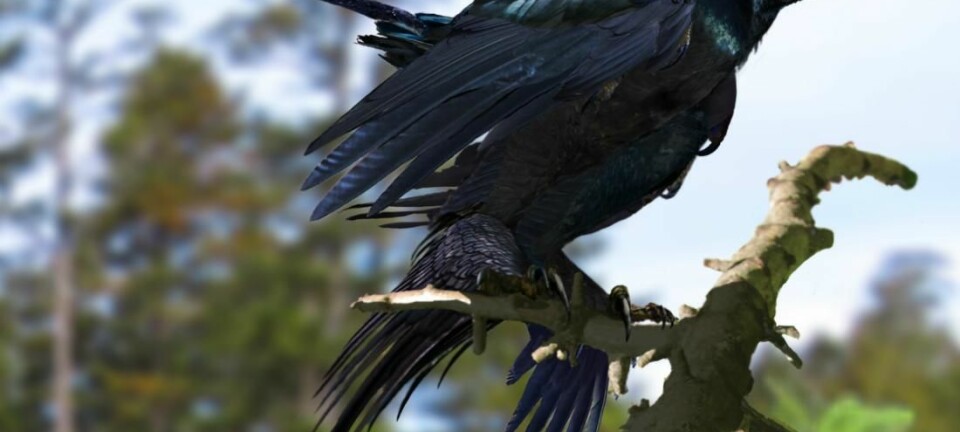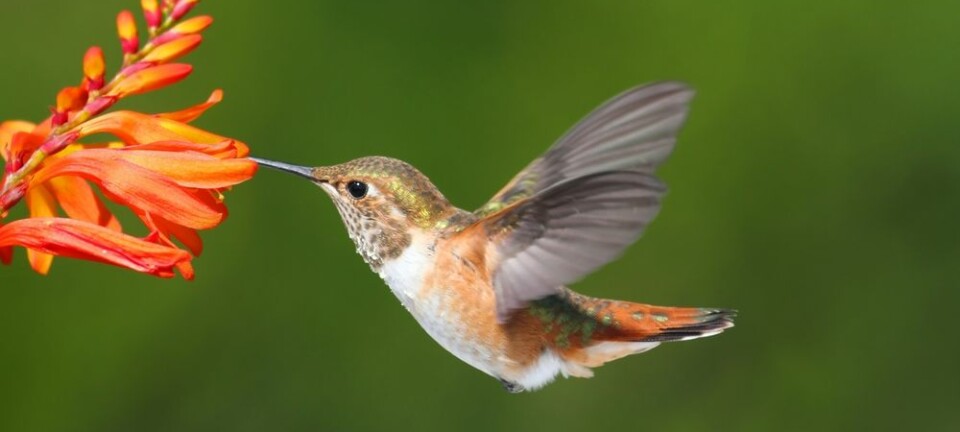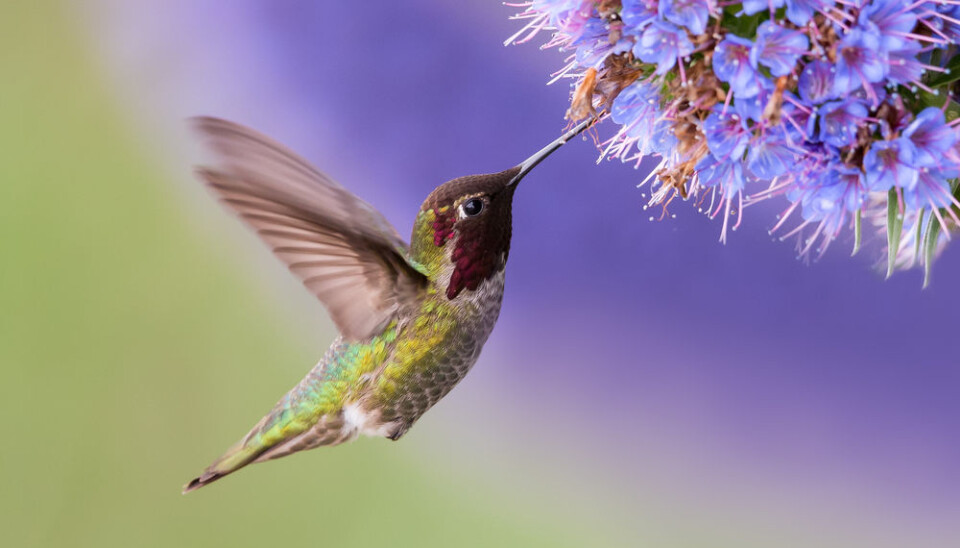
Groundbreaking genome sequencings reveal how birds became birds
Scientists have sequenced the genomes of 48 different species of birds. Their findings reveal how birds developed, how all bird species are related, and what made them develop special characteristics.
How did birds come to have feathers? How did they learn to fly, and why on earth did they learn to sing?
All these questions and a whole range of others have been addressed in 23 scientific articles recently published in the journals Genome Biology, BMC Genomics, BMC Evolutionary Biology, Gigascience and others. Eight of the papers have been published in a special edition of Science.
Together, the studies represent a monumental investigation into what it means to be a bird and how, in terms of evolution, birds have developed as a species.
At the heart of it are biologists from the University of Copenhagen who sequenced 48 bird genomes in collaboration with colleagues from the Beijing Genomics Institute (BGI) in China.
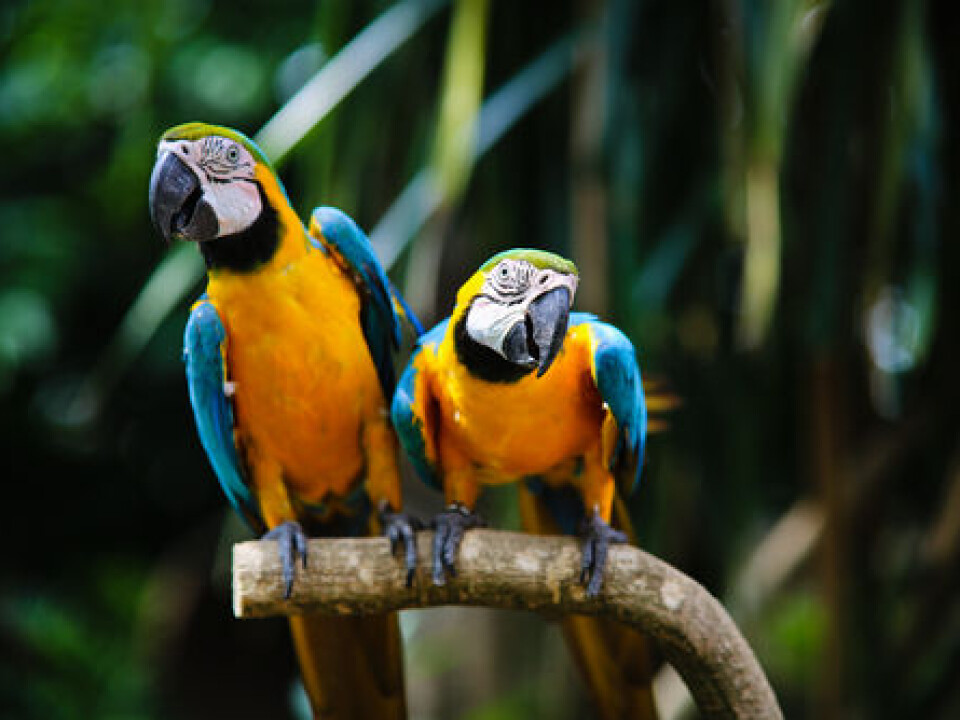
We’ve created the largest ever dataset of bird genomes,” says Professor Thomas Gilbert from the Centre for Geogenetics at the Danish Natural History Museum, University of Copenhagen.
He says it has taken years of work by different groups of scientists to arrive at the answers.
“Our data encompasses all the main species of birds and this finally enables us to establish exactly what makes a bird a bird," says Gilbert.
Flight requires more than just wings
So what do the 23 papers tell us?
According to Gilbert, the genome tells the story of how birds developed, how all bird species are related, and what made them develop special characteristics.
They also help explain more general characteristics common to the vast majority of birds.
For example, says Gilbert, birds didn't simply get wings and immediately start flying. In order to flap their wings, birds first had to develop ultra-light, honeycomb-structured bones.
They also needed a lung structure that was entirely different from that of other animals. This has resulted in birds’ metabolisms drastically intensifying when they fly. The increased metabolism also required a fundamental change in the biochemistry of the cells so they could handle the tremendous stress.
All this characteristics are visible in the genome datasets and by studying them, scientists can read the evolution of the bird like an open book.
"We’re starting to answer all the questions about how these different genes entered the birds' genomes," says Gilbert.
All birds are toothless
Flight is not all the scientists have examined.
One of the articles in Science explains why birds have no teeth.
The scientists compared the genomes from the new dataset with those of animal species who have teeth and by doing so they were able to see which of the birds' genes responsible for producing teeth had mutated to an extent where they were no longer functional.
Turns out that a mere five genes, all coded for tooth production, became dysfunctional through various mutations in a common ancestor of all birds some 100 million years ago.
That’s why birds no longer have teeth.
"Information like this helps us work out what the ancient birds, who survived the meteor impact that killed all the other dinosaurs 65 million years ago, looked like," says Gilbert.
How birds learned to sing
Another question answered by the new research is the question of why birds sing.
From the genomes, the scientists can see that birdsong arose on two occasions independently of each other.
So the singing is not a characteristic that originated with the first birds millions of years ago -- instead, it developed in two or more different species, all of which had to undergo mutations in different genes in order to be able to sing.
What is more, one of the papers in Science reveals that birds like parrots and hummingbirds are using the same 50 genes that humans use to speak.
While it may be the same genes, the internal wiring has developed completely different so although humans and birds share these characteristics, they have nonetheless developed them separately over millions of years.
Finally, a study in PLOS One shows that parrots’ ability to speak has developed in a quite unique way and the researchers believe this could explain why parrots are so good at imitating human speech.
Chickens most similar to dinosaurs
It also turns out that birds’ genomes contain a lot of micro chromosomes which stores genetic information. This is something mammals don’t have.
Scientists are pretty convinced that dinosaurs also had these tiny micro chromosomes and birds are often referred to as modern dinosaurs since they’re the only descendants of the prehistoric giants.
In a study published in BMC Genomics, scientists studied the genomes of the chicken, turkey, Peking duck, zebra finch, and the budgerigar to find out which of them is the closest relative to the dinosaurs.
The study showed that the chicken was most closely related to a common ancestor for all birds and according to the scientists, this ancestor must have been some kind of feathered dinosaur.
Sex chromosomes separate the bird species
In another study, scientists examined birds' sex chromosomes.
Unlike humans, birds have turned the role of their sex chromosomes upside down.
In humans, women have two of the same sex chromosomes, X-chromosomes, while men have one X-chromosome and one Y-chromosome.
In birds, the reverse is true. Female birds have two different chromosomes, while males have two identical ones.
Avian sex chromosomes have developed very differently
By examining the chromosomes the scientists were able to see how far the various species of birds had developed since the origins of sex chromosomes.
They did this by examining how similar the sex chromosomes of males and females are.
If the sex chromosomes are very similar the chromosomes have not developed that much since their origin, while a clear difference between the chromosomes indicates substantial development.
The scientists discovered that birds' chromosomes have developed very differently.
"For instance, the sex chromosomes of emus and ostriches are very similar, while zebra finches and peacocks have very different sex chromosomes," says Professor Guojie Zhang from the University of Copenhagen and BGI.
The scientists are wondering whether the diversity of the sex chromosomes can actually be used to tell us how the appearance of males and females within each species differ.
Take peacocks for example, who have very different sex chromosomes and as such look very different. Crows on the other hand have very similar sex chromosomes and are also very difficult to distinguish from each other.
Mutations can help threatened species
Finally, a study in Genome Biology details how the threat of extinction can in fact change and affect the birds’ genes.
The scientists examined the genome from the threatened ibis and the white headed sea eagle and saw that when a bird had been close to extinction it experienced an increase in the mutation rate in its genome.
This is good news for many of the species of birds who are on the brink of extinction.
More research on the way
The 23 articles published only represents the tip of the iceberg of bird history that scientists expect to be able to extract from the bird genomes, says Gilbert.
There are still many genetic sequences in the genomes that scientists don’t know the function of.
The new dataset is only the first of a series of datasets which will enable scientists to better understand a whole range of animal groups -- and life itself.
"We stand at the beginning of an entirely new era, in which we no longer conduct genetic studies of one species at a time but examine many different species at the same time,” says Gilbert. “This tells us not just something about the individual species, but about life itself. This research work exemplifies the possibilities that these large datasets represent. We’ll see much more of this in the future.”
-------------
Read the original story in Danish on Videnskab.dk
Translated by: Hugh Matthews
Scientific links
- Whole-genome analyses resolve early branches in the tree of life of modern birds, Science, DOI: 10.1126/science.1253451
- Comparative genomics reveals insights into avian genome evolution and adaptation, Science, DOI: 10.1126/science.1251385
- Complex evolutionary trajectories of sex chromosomes across bird taxa, Science, DOI: 10.1126/science.1246338
- Convergent transcriptional specializations in the brains of humans and song-learning birds, Science, DOI: 10.1126/science.1256846
- Evidence for a single loss of mineralized teeth in the common avian ancestor, Science, DOI: 10.1126/science.1254390
- Reconstruction of gross avian genome structure, organization and evolution suggests that the chicken lineage most closely resembles the dinosaur avian ancestor, BMC Genomics, doi:10.1186/1471-2164-15-1060
- Low Frequency of Paleoviral Infiltration Across the Avian Phylogeny, Genome Biology, doi:10.1186/s13059-014-0539-3
- Genomic signatures of near-extinction and rebirth of the crested ibis and other endangered bird species, Genome Biology, doi:10.1186/s13059-014-0557-1
